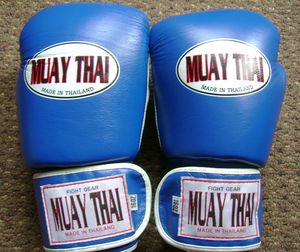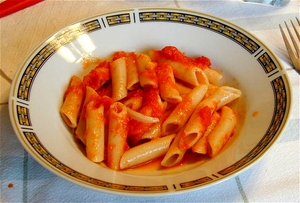For many, the term kickboxing conjures up an image of a serious and violent martial arts event that would belong in a Jackie Chan movie. In reality, kickboxing can be this, but for most is an exciting and heart pumping type of workout. By learning a few key moves, you can start toning up and kicking butt!
Kickboxing includes both upper and lower body moves. Let begin with your basic types of punches. There are four basic types of punches, the cross, the jab, the hook and the uppercut. A cross means you punch forward and slightly across your body at shoulder level. If done correctly, you should slightly twist your waist. A jab is just a short, quick punch right in front of you, again at shoulder level. A hook is similar to a cross except your arm should be parallel to the floor with your fist down. The actually punch should mimic the motion you would make sliding your arm across a shelf. Your entire arm should remain at shoulder level throughout the punch. By keeping these punches at shoulder level you are strengthening your arm and shoulder muscles. Lastly, the uppercut is a punch from below. In slow motion and uppercut will look like a bicep curl. You should start low and imagine hitting your opponent on the underside of their chin. These are your four basic punches.
Doing upper body exercises alone can greatly improve your fitness. But to up the intensity, and get more dramatic results, it is best to add in lower body moves as well. There are four basic kicks in kickboxing. They are the front kick, back kick, side kick and roundhouse kick. When performing a front kick, you will lift your knee up first, as high as you can, and then kick forward. The kick should happen in two distinct movements- up and front. If kicking a bag, or partner, you will want to make contact with your heel. A back kick, or a donkey kick, is done by slightly bending forward, bending your leg up behind you, and kicking back. This is a great move to work the gluteus, or butt muscles. A side kick is done similarly to the front and back kicks. First bring your knee up in front of you. Then kick from the knee and kick your leg out to your side. Contact should be made with your heel. The last kick is a roundhouse kick. It is called a round house because the path your foot takes is more rounded than straight. Begin by lifting your knee up and twisting at your hip to bring your knee inward toward your torso. To complete the kick , your foot should travel in a scooping or J like path outward away from your body and around to hit the target on the side.
Punches will strengthen your biceps, triceps and shoulder muscles to give you a more toned upper arm. Kicks help to firm and tone your thighs and butt. When done in rapid succession, a cardio effect can be achieved which will help burn calories and help you lose fat. To achieve more muscle tone, use a heavy bag or weights when punching, to put extra stress on your muscles. For a better cardio workout, keep moving and add in jumping jacks, jogging in place, and jumping rope to keep your heart rate up and keep the fat burning.
There are many popular DVD’s based on kickboxing that t cover these basic moves. Tae-bo, and Turbo-Jam are two of the most popular. Most gyms offer similar classes as well. When initially beginning these workouts the pace can be daunting. If you learn on your own at home, and slowly ramp up, you will feel more comfortable when stepping into these faster workout routines. Either way, just remember that the goal is to keep moving. With a little dedication you will soon start to see your stamina and strength increase.
Kickboxing workouts are so popular because they are a great stress reliever and because they offer tangible results quickly. By learning these basic upper and lower body kickboxing moves and doing a kickboxing themed workout a couple of times a week, you will begin to see a marked improvement in your stamina, strength and overall appearance.






